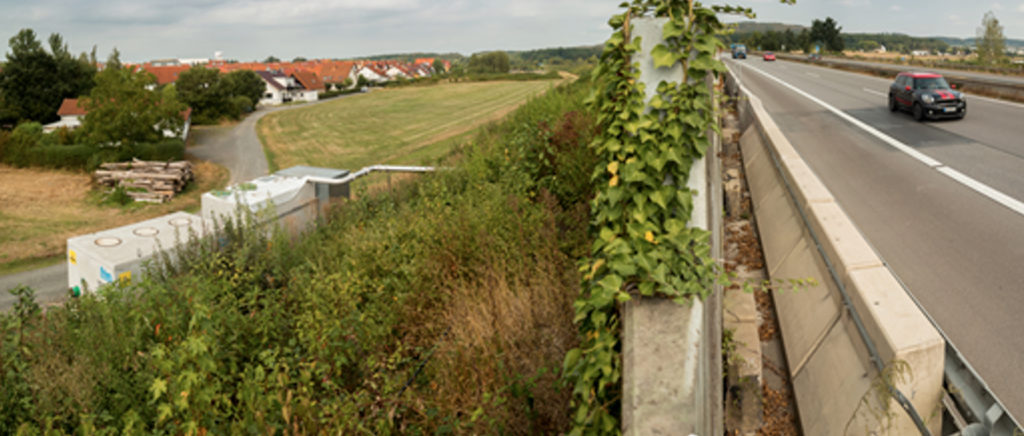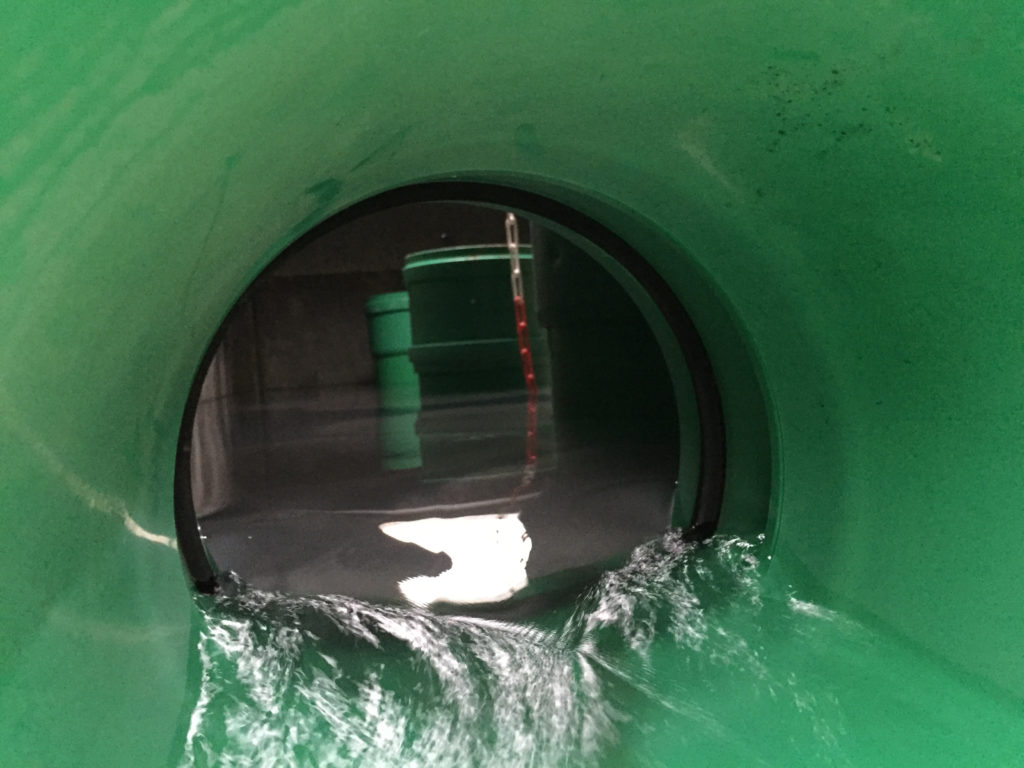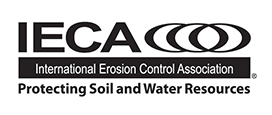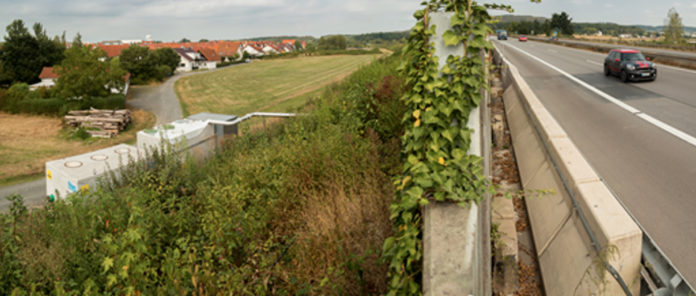By Ann Ryan; Carsten Dierkes, Dr.-Ing
Designers and manufacturers who are developing the next stage of advanced stormwater treatment are considering the impact deicing salts have on heavy metals. By increasing the mobility of heavy metals in runoff, the use of deicing salts poses two problems: increased damage to the ecosystem and decreased efficacy of filters traditionally used to protect water quality.
The use of deicing salts to prevent ice formation on roadways, parking areas and walkways has increased exponentially since they were first used more than 80 years ago. Estimates put worldwide use of road salts at approximately 66.14 million tons (60 million m tons) a year.
Annual estimates for use of road salt in countries that experience heavy snowfalls include: United States with 24 million tons (21.77 m tons); Canada with 5 million tons (4.54 million m tons) and Germany with 1.8 million tons (1.63 million m tons). U.S. figures present a stark example of the growth of deicing salt use. About 164,000 tons (148,778 m tons) were applied to public roads in 1940. The rise to application in 2020 represents an increase of more than 14,500%. These volumes are only for public roadways and areas. Deicing salt use by private industry and landowners in many countries is estimated at a similar volume, or more.
Research on the environmental impact of deicing salts in stormwater has focused primarily on salination damage to soil, groundwater, bodies of water and infrastructure. “Freshwater salinization from numerous anthropogenic activities including weathering of buildings and concrete, the widespread use of deicers and fertilizers is an emerging global issue impacting safe drinking water, ecosystem health and biodiversity and infrastructure,” write Kaushal, Likens, et. al, in April 2021.1
Only in the last several years have environmental engineers and stormwater system designers begun to realize the degree to which heavy metals in stormwater runoff are also a significant source of pollution. When heavy metals accumulate in groundwater and waterways, they can cause severe, chronic damage to aquatic habitats and drinking water resources. “Even low concentration of heavy metals may inhibit the physiological metabolism of plants,” write Singh and Kalamdhad.2 “Uptake of heavy metals by plants and accumulation along the food chain,” they continue, “is a potential threat to animal and human health.”

A specific element of deicing salts in runoff has even more recently been recognized as a subject to be studied and a challenge to be addressed: the remobilization of heavy metals in stormwater when deicing salts are applied. Essentially, when deicers are applied to nonporous surfaces, heavy metals are transported to waterways at accelerated rates. This increased mobility occurs with both chloride and and non-chloride deicers, so while non-chloride deicers may help with salination damage, it does not mitigate harm caused by heavy metals.
In research delivered to the Conference of European Directors of Roads (CEDR) in 2019, heavy metal in runoff was called out as an area of concern in terms of adverse impact on both soil and water. This research represents data gathered from Austria, Finland, Germany, Ireland, Norway, Sweden and the Netherlands and reports that in terms of road salt washing off road surfaces, particularly made of concrete or other impermeable materials: “The infiltration of runoff with high concentrations of salt will over time affect the infiltration capacity in the ditches, as the soil structure will be altered over time due to the above mentioned cation exchange between sodium and other cations in the soil, which could also include previously adsorbed heavy metals such as zinc and copper….”3
Because of the ion exchange process between sodium and calcium when stormwater runoff contains deicing salts, the use of salts reduces the permeability of soil. Therefore, the natural filtration action of soil is impeded and runoff does not move through the ground in the way necessary to efficiently control and “treat” runoff. This is avoided when filters installed in stormwater systems are manufactured of media that remove heavy metals.
Heavy Metals from Multiple Sources
Aside from deicing salts themselves, heavy metals are “shed” from numerous sources in traffic areas: asphalt, batteries, brake linings, electronics, engines, exhaust, fuel additives, lubricating oil, metal plating, petroleum products, tires and traffic devices. A study summarizing 1973–2015 data on heavy metals found in U.S. and European roadways identifies zinc, copper and lead as the major heavy metals found in city roadways, parking areas and highways outside metro areas (Huber, Hilbig, et al).4
To understand the toxicity of heavy metals and the ultimate environmental impact, it is crucial to understand metal speciation—the forms metals take as they are distributed and how they travel. Heavy metals such as zinc and copper are transported by stormwater runoff either attached to solids or dissolved. It is also important to understand that the problem occurs when heavy metals trapped in the soil or in stormwater treatment systems in summer months are released back into stormwater in winter months.

Numerous filtration manufactured treatment devices (FMTDs) have been developed to capture pollutants in stormwater runoff prior to discharge into surface water or local groundwater. To know if an FMTD will work most effectively, sorption isotherms, sorption kinetics and the competitive behavior between metals must be considered.
One guide for a test to determine an FMTD’s efficacy is the standardized stormwater-filter deicing protocol developed by a leading European technical authority (DIBt in Germany). This protocol considers particulate metals as total suspended solids, dissolved copper, dissolved zinc and different deicing salts. It can be used as the base for an advanced filter protocol for heavy-snowfall regions.
While filters can greatly reduce the presence of heavy metals in runoff, deicing salts can reduce a filter’s effectiveness. Therefore, the type of filter media used impacts how effectively heavy metals are removed. The filters tested in both laboratory and field tests in Germany between 2009 and 2018 incorporated a variety of filter media to remove pollutants:
• Active coal for adsorption of hydrocarbons and herbicides.
• Calcium carbonate for precipitation of dissolved phosphorous.
• Synthetic zeolite for ion exchange of heavy metals.
In the laboratory test, dissolved copper was removed with an efficiency of 90.3% and dissolved zinc was removed with an efficiency of 85.5%. No remobilization of trapped metals was found.
Both laboratory and field tests—including filter-media removal mechanisms consisting of filtration, sorption and ion exchange—showed that the effluent water met the German standard for stormwater, which is a higher standard for heavy metals than for drinking water in Germany.
As awareness of the environmental problems created by use of deicing salts grows, municipalities, governing agencies and organizations are exploring alternatives. Everything from the timing, concentration and combination of traditional road salts is being considered and tested—as well as diluting the salts with alternatives such as beet byproducts.
Any effective, widespread alternative to deicing salts is years away. That leaves an urgent need both to address heavy metals moving through stormwater systems today and to develop protocols to test filters for heavy-metal retention when deicing salts are applied. Meanwhile, adding the step of stormwater filtration with proven efficacy in removing these pollutants would be a major step forward in mitigating predictable and preventable harm to groundwater, watersheds, waterways and freshwater bodies.

About the Experts
Ann Ryan has written for international business and industry publications for more than 30 years. She has served as a communications consultant for numerous companies, including consulting on products and technology for Shawcor, a global company that manufactures and develops sustainable products and solutions that protect the environment, conserve resources and extend infrastructure asset life.
Carsten Dierkes, Dr-Ing, has studied, lectured and consulted on the transport behavior of heavy metals in road runoff during stormwater infiltration for more than 20 years. He is the managing director of H20, where he is investigating and developing innovative stormwater technologies, as well as a lecturer and presenter at universities and conferences.
For Further Reading
Schuler, Matthew & Rick Relyea. A Review of the Combined Threats of Road Salts and Heavy Metals to Freshwater Systems. BioScience, p. 327-336, Vol. 68, Issue 5, May 2018.
References
1) Kaushal, S; Likens, G; Mayer, P; et al. Freshwater Salinization Syndrome: Emerging Global Problem and Risk Management. Biogeochemistry, June 2021.
2) Singh, J; Kalamdhad, AS. Effects of Heavy Metals on Soil, Plants, Human Health and Aquatic Life. International Journal of Research in Chemistry and Environment, January 2011.
3) Muthanna, TM; Knegt, J; Bink, S; et al. CEDR Call 2016: Environmentally Sustainable Roads: Surface- and Groundwater Quality. Conférence Européenne des Directeurs des Routes (CEDR), May 2019.
4) Huber, M; Hilbig, H; Badenberg, SC.; et al. Heavy metal removal mechanisms of sorptive filter materials for road runoff treatment and remobilization under de-icing salt applications. Elsevier, June 2016.












